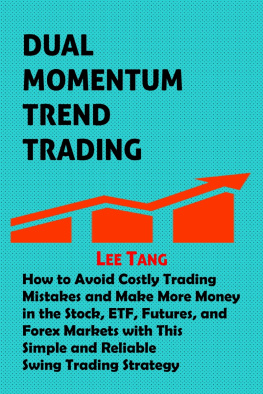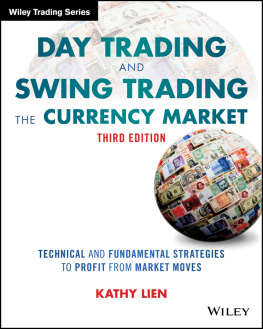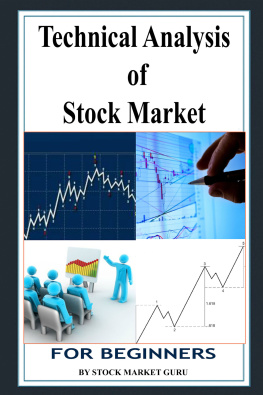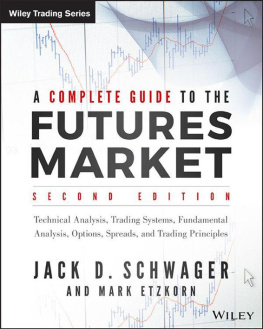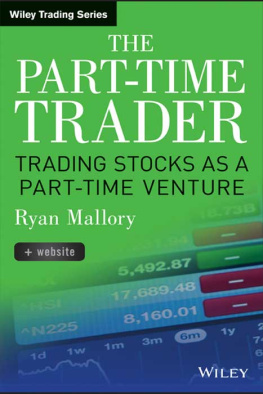Countless books have been written about price chart analysis. But I have yet to see a book that explains the structure of price movement, as represented in the price chart, and then shows how to apply that analysis to the financial markets in a consistent way.
Until now.
This book has been written to guide you in the development of a practical, structured framework that will enable you analyze price charts proficiently and, it is hoped, profitably. So with that, lets dive right in.
An Introduction to Chart Reading
When it comes to price charts, most traders hold one of two views. They either dismiss charts as fancy presentations of historical data with no real analytical value. Or they give chart reading too much weight, believing that all they need is a price chart in order to perfectly predict the future of a market.
The truth lies somewhere in the middle. Charts are one of the best tools available for analyzing a market. They present an unbiased and accurate history of price changes without any of the spin that comes from company representatives, Wall Street analysts, and their ilk.
Charts dont tell the whole story, of course. They cannot provide every type of information that a trader could possibly use to assess a market, like the other players intentions or the cost of their holdings. But they do offer that rarest of commodities: the facts. And that means that, against all the bluster of the markets, a price chart can be your anchor.
If you know what to look for.
Learning to read charts can be confusing. And often, consulting books on technical analysiswith varying indicators, charting styles, and the likecan make the process more confusing. What you need is something that cuts through the clutter. While many websites detail different indicators and various chart patterns, no one has produced an incisive guide on how to effectively analyze price charts. I hope to remedy that dearth with this book: A clear, concise summary of the most important elements of chart reading.
Once you have mastered these elements and are able to interpret a chart correctly, you can go on to expand your chart-reading skills in a number of ways. You can explore more complex chart patterns to expand your basic tool set. You can add indicators and other data to your charts and learn to incorporate them into your decision making. And you can explore concepts like price structures (e.g. market profile and STOPD) and breadth analysis to further enhance your precision in market timing.
But first, you need to master the basics. This book aims to help you do just that.
The Ten Commandments of Chart Reading
Before we go any further, I would like to share my Ten Commandments of Chart Reading .
Commandment I
You shall know the specifications of the symbols you are reading off your charts.
Commandment II
You shall not decorate your charts with squiggly lines, pretty colors, and indicators of any sort until you understand the principles of chart reading.
Commandment III
You shall use your mastery of chart reading to determine the balance of power among the markets most influential participants.
Commandment IV
You shall not be tricked into thinking youve kept Commandment III simply by identifying the swing highs and swing lows on a chart.
Commandment V
You shall not be fooled by randomness. Prices go up. Prices go down. Sometimes there really is no discernible meaning behind the madness.
Commandment VI
You shall recognize those situations when Commandment V does not apply.
Commandment VII
You shall remember that the trend is your friend until, and unless, it ends.
Commandment VIII
You shall know how to determine the end of a trend.
Commandment IX
You shall not get lost in the ticks of the chart. You shall always keep the big picture in mind.
Commandment X
You shall know when to step away from the charts and clear your head.
As you progress in your command of the art of chart reading, you may come up with some additional commandments of your own. Write them down!
In Order to Interpret a Chart, You Need to Understand Basic Chart Patterns
Before you can read a chart properly, you will need to build up your knowledge of basic chart patterns. Im not talking about simply recognizing the patterns that the technical analysis books describe. Im talking about understanding those patterns and all of their implications.
Let me offer an analogy: Anybody can tell the difference between someone who has a fever and someone who does not. But only a medical professional would be able to go beyond something as simple as an elevated temperature. Only someone with training and experience would know what other symptoms to look for in order to make a precise and accurate diagnosis. And that diagnosis is the key to treating an illness properly.


